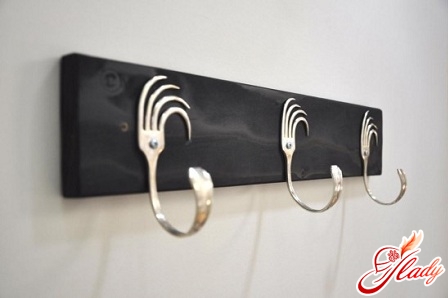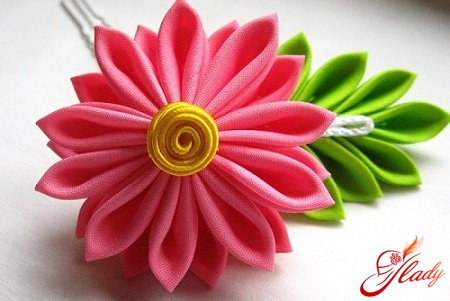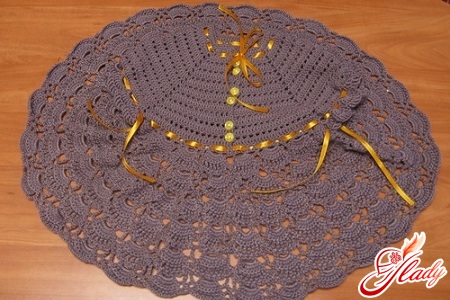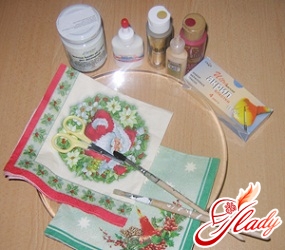 Tight living circumstances,forcing people to save on something sometimes leads to unpredictable results! For example, for reasons of economy, Italian pizza appeared and became world-famous and incredibly popular, and forced economy of fabric led to the emergence of the decorative and applied art of patchwork sewing. Thrift (not to be confused with stinginess!) was and remains one of the valuable human qualities, and the ability to give new life to old things allows not only to save money, but also to realize your creative potential. Of course, today the resuscitation and alteration of old things pursues both of these goals. Someone is simply incredibly sad to part with old and dear to the heart things, and someone really is forced to follow the proverb "necessity is the mother of invention." But, regardless of the goals, there are only two ways to achieve them: either we restore the old thing, or turn it into something completely new. It is about the latter that we will talk. What can be made from old things, breathing new life into them?
Tight living circumstances,forcing people to save on something sometimes leads to unpredictable results! For example, for reasons of economy, Italian pizza appeared and became world-famous and incredibly popular, and forced economy of fabric led to the emergence of the decorative and applied art of patchwork sewing. Thrift (not to be confused with stinginess!) was and remains one of the valuable human qualities, and the ability to give new life to old things allows not only to save money, but also to realize your creative potential. Of course, today the resuscitation and alteration of old things pursues both of these goals. Someone is simply incredibly sad to part with old and dear to the heart things, and someone really is forced to follow the proverb "necessity is the mother of invention." But, regardless of the goals, there are only two ways to achieve them: either we restore the old thing, or turn it into something completely new. It is about the latter that we will talk. What can be made from old things, breathing new life into them?
Old clothes
Of course, to make something out of old clothesto renew, you need to be able to sew and (or) knit. For example, dresses, skirts, trousers and the like that have gone out of fashion... If they have lost only their fashion relevance, but have retained a quite decent appearance, then do not rush to throw these things away. Firstly, they will serve as an excellent material for sewing children's clothes. Secondly, these things can be used as a basis for making patchwork-style products, and this is not only clothing, but also all kinds of capes and furniture covers, kitchen potholders, patchwork bedspreads and blankets. And thirdly, old things are quite suitable for making new clothes for yourself: trousers can easily turn into shorts or a skirt, a dress into a sundress, and a jacket into a vest. Jeans are a separate topic altogether. Denim is such a versatile material that it can find a new life in the form of a bag, bedspread, car seat covers. By the way, jeans are also quite suitable for patchwork. Just don't forget that all the things need to be washed and ironed first, and only then can you make something new out of them. Old home-knitted knitwear. Again, if the yarn from which these things were knitted is still quite strong, then it is enough to simply unravel the old knitted clothes, wash and straighten the yarn and use it to knit new things. Believe me, with due diligence, things knitted from such threads will look no worse than those made from new yarn. In any case, even if you do not risk knitting pullovers or sweaters from this yarn, it will be quite a suitable material for socks and mittens. In addition, new high-quality yarn is expensive enough to tempt you with the prospect of getting free knitting material. Stockings and tights. As a rule, these wardrobe items are immediately sent to the trash can as soon as they are torn (sometimes, not even surviving the first wash). By the way, cut into thin strips, they become excellent "yarn" for crocheted or knitted rugs, bags and washcloths. Old tights can also be used to stuff sofa cushions or soft toys. They can be used for textile sculpture or making artificial flowers. Nylon tights are also great for garters in the garden and vegetable garden, a paint filter during repairs, or a cover for storing blankets and pillows.
Home textiles
There are certainly far fewer options here,than with old clothes. However, home textiles can also find a new life in your skillful hands. For example, bed linen. High-quality chintz, satin and linen are durable and strong fabrics. Sheets wear out the fastest, and not entirely, but only in the middle. By cutting off strips from the whole edges of the sheets, you can sew new sets of bed linen or at least new sheets or duvet covers. Tired blankets and bedspreads can also be updated by cutting them into pieces and sewing new bedspreads using the patchwork technique. If sewing thick blankets is difficult, then the scraps can be connected using a crochet hook and suitable yarn. Terry towels. They wear out, like sheets, mainly in the middle. The edges, as a rule, remain intact and even soft and fluffy. It is a pity to throw away such towels, but what can you do? And the following can be done. Firstly, you can give a new life to large bath towels by turning them into small kitchen towels. Secondly, you can make a beach bag (or a pool bag), terry slippers or shorts, or even a terry children's robe from such towels. And also - kitchen potholders, children's bibs, washcloths and rugs. Tablecloths. We are talking, of course, about linen tablecloths. As a rule, they become unusable not because they wear out, but because they are "decorated" with practically indelible stains, but the edges of the tablecloth usually remain clean. And most often, it is the edges of tablecloths that are especially decorative. Therefore, from such beautiful, whole and clean edges, you can sew linen napkins or bags for storing bulk products, as well as kitchen towels or potholders.
Furniture
Having fallen into disrepair or gone out of fashionfurniture, usually goes to the dump or, at best, to the dacha. However, it is also possible to give new life to old furniture. And even if gentle female hands are not able to cope with such a task as furniture restoration, here are some examples of unconventional use of traditional furniture. What do we get rid of as something that has lost its former attractiveness and chic? Wall units that have gone out of fashion, replaced by all sorts of fashionable wall units and modular furniture. However, removable mezzanines from such walls can well continue their life in your home, turning, for example, into a shoe cabinet or a voluminous and roomy nightstand in a child's room. A bookcase from a wall unit can easily become a coat rack in the hallway if you remove the doors and shelves from it and screw on hooks for clothes. By the way, by placing a mezzanine (shoe cabinet) next to this cabinet, you will get a ready-made hallway. If you are embarrassed by the unpresentable appearance of such "new" furniture, then simply update the fittings and use self-adhesive film. By the way, for ladies who know the technique of decoupage, it will not be difficult to update any furniture at all. This can be an old grandmother's sideboard or chest of drawers, and a kitchen set, and a piano, and children's furniture. And the furniture front can be updated by covering it with fabric or simply painting it with acrylic paints and varnishing it. As for upholstered furniture, here you probably won't get a completely new life. Having set a goal to tidy up old upholstered furniture, you will most likely have to restore and repair it. You can, of course, try to do it yourself, but it is best to turn to specialists. And often buying a new sofa is even cheaper than restoring it with repairs and re-upholstery. Although, if you do not spend money on new upholstery fabric, but sew a patchwork cloth for these purposes, then old unpresentable furniture will really look like new, and most importantly - it will be unique, since you will not find anything like this in other houses. And the basis for such a cloth can be a dense and durable fabric from any old clothes or the same jeans.
Dishes
Actually, it's better to throw away old dishes right away.throw away, especially if it has cracks, chips and dents. However, there are options to give new life to old things. For example, plates and dishes. They can be hung on the wall, having been previously decorated with decoupage napkins or painted with acrylic paints. Painted pot lids or old baking tins will also become wall decorations for the kitchen. Cups. There are not so many options here: you can, for example, use them as miniature flower pots. And earthenware and ceramic cups, saucers and plates will serve as an interesting material for ceramic mosaics. True, for this you will first have to break them, and then select the most even pieces from the fragments. As for metal utensils, they have only one chance to find a new life - to go to the country as flower pots. But spoons and forks can well serve as material for a decorative panel in the kitchen or original hooks (if they are bent beforehand). But this idea is only suitable for particularly creative housewives who value originality and are independent of other people’s opinions.
Other ideas
In general, it must be said that new life is capablealmost any old thing can be acquired, unless of course it is dying. And DIY enthusiasts are so creative that it is simply amazing! Everything (or almost everything) is used. Judge for yourself. An old fiber suitcase turns into a vintage coffee table or a stylish and comfortable bed-sofa for pets. Old tennis rackets can become a new frame for a mirror. A hopelessly broken umbrella (or rather, its top) can serve as material for a shopping bag, a kitchen apron or a school bag for a change of shoes. Records become new flower pots, and burnt-out light bulbs - painted Christmas tree decorations. CDs are used as a decorative covering for walls, lampshades and photo frames are made from them. The inside of the door of an old refrigerator is used as a hanging shelf for the bathroom. Even toilets and sinks, having moved to summer cottages, turn into creative garden flowerpots or simply serve as the basis for a flower bed. In a word, a person's imagination knows no bounds in his desire to give new life to old things. However, creativity is creativity, but you still need to know when to stop. Sometimes people try to create something new from obvious trash, and this is more like a painful condition than thrift and creativity.
P.S
If your main priority is thriftiness and the desire to preserve or revive old and dear things, then decide what suits you best:
- Repair (elimination of breakages and damages, updating of a thing with preservation of its purpose);
- Restoration (restoration of the original form of a shabby thing);
- Alteration (changing the function of things);
- Use as a material for a new thing.
If none of the above points applydoes not suit you, then there is only one way out - disposal. This means that the thing dear to you has simply outlived its usefulness, turning into hopeless junk. And you need to part with such things mercilessly! Sometimes the new life of old things turns out to be unnecessary not only for you, but even for these things. Do not be overly thrifty!









